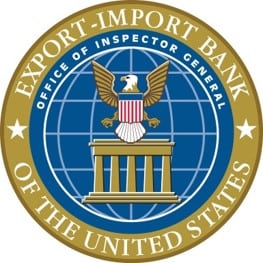Ex-Im Bank Reauthorization: Major Victory against Cronyism, Despite Setback

 Nobel laureate economist Ronald Coase wrote in his 1975 essay “Economists and Public Policy” that “An economist who, by his efforts, is able to postpone by a week a government program which wastes $100 million a year (which I would call a modest success) has, by his action, earned his salary for the whole of his life.” By Coase’s measure, the Ex-Im fight that began in 2014 was an enormous success, despite the coming reauthorization setback.
Nobel laureate economist Ronald Coase wrote in his 1975 essay “Economists and Public Policy” that “An economist who, by his efforts, is able to postpone by a week a government program which wastes $100 million a year (which I would call a modest success) has, by his action, earned his salary for the whole of his life.” By Coase’s measure, the Ex-Im fight that began in 2014 was an enormous success, despite the coming reauthorization setback.
Based on data available in Ex-Im’s annual reports, this fight over a relatively small agency was worth $47.9 billion of dollars in reduced Ex-Im activity from 2014-2018. This reduced taxpayer risk exposure by an average of nearly $12 billion per year. Moreover, this figure assumes Ex-Im activity would have remained constant without the shutdown and board quorum fights of the last five years. Agencies tend to grow, so $47.9 billion in savings is likely an underestimate.
By another measure, the size of Ex-Im’s total portfolio went from $112.3 billion in 2014 to $60.5 billion in 2018, reducing taxpayer exposure by a total of nearly $52 billion, or an average of just under $13 billion per year. If this much in savings can come from temporary activity reductions in one agency, savings from successful permanent reforms of larger agencies could be substantial.
The free-market movement deserves a lot of credit for one of its biggest victories in recent years. Veronique de Rugy at the Mercatus Center, Bryan Riley at the National Taxpayers Union, Daniel Ikenson at the Cato Institute, Diane Katz at the Heritage Foundation, and many others have been tireless in their advocacy against cronyism, and pushing for a pro-market, rather than a pro-business, approach to policy.
While this month’s reauthorization is a setback, there is still a chance to enact some helpful reforms. Moreover, the fight is not over. Ex-Im will also require another reauthorization in a few years’ time, which will be another opportunity to finally end an 85-year old monument to cronyism.
The whole paper is here. For a short summary of the main findings, a press release is here.